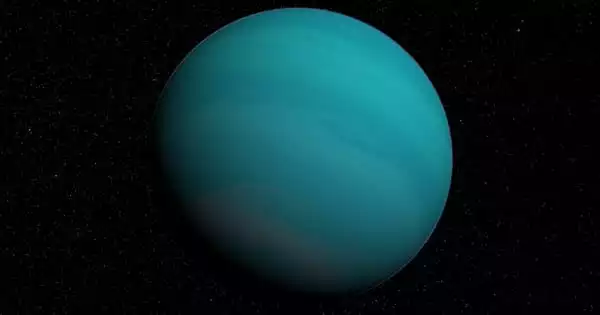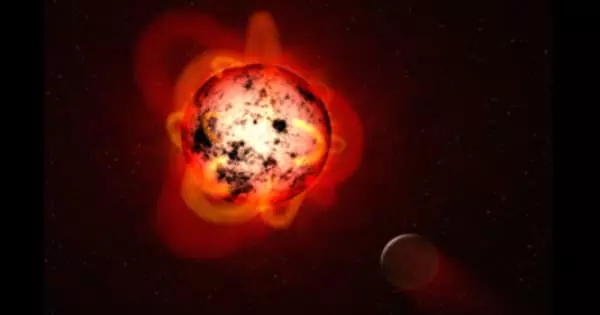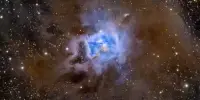Gliese 849 b is an extrasolar planet located in the constellation Aquarius, approximately 29 light-years distant. It is a gas giant exoplanet that revolves around an M-type star. It orbits the red dwarf Gliese 849 as an extrasolar planet. It has a mass of 0.9 Jupiters, takes 5.2 years to complete one orbit of its star, and is located 2.409 AU away from it.
It was discovered in 2006, and its finding was announced. It is the first long-period Jupiter-like planet identified near a red dwarf, and it was announced in August 2006 by the California and Carnegie Planet Search teams using the radial velocity approach. Gliese 876 b was previously the longest-period Jupiter-like planet orbiting a red dwarf. However, there are two disproven longer period Jupiter-like planets in the vicinity of Lalande 21185. There are hints of a potential second partner. It has a mass of around 270 Earth masses and orbits its star further than the Earth orbits the Sun.
Gliese 849 is a tiny, single star in the Aquarius equatorial constellation. With an apparent visual magnitude of 10.41, it has a reddish tint and is invisible to the human eye. Based on parallax, the distance to this star is 28.7 light-years, yet it is moving closer to the Sun with a radial velocity of −15.3 km/s. It is accompanied by two recognized gas giants.

Although only the minimal mass is known, the planet’s mass is less than that of Jupiter. The planet has a minimum mass of 0.82 Jupiter masses and orbits its star with an orbital period of around 2000 days at a distance of about 2.35 astronomical units (about 260 Earth masses). The distance of the planet is 2.35 AU and it takes 5.17 years (1890 days) to revolve in a circular orbit.
GJ 849’s stellar classification is M3.5V, indicating that it is a tiny red dwarf star that generates energy by hydrogen fusion in its core area. Several investigations have discovered super-solar abundances in spectra, showing that the elemental abundances of higher mass elements are much higher than in the Sun. The star is almost half the mass and size of the Sun and spins slowly, with a revolution period of around 39 days. The star is thought to be more than three billion years old. At an effective temperature of 3,601 K, it radiates only 2.8 percent of the Sun’s brightness from its photosphere.
















